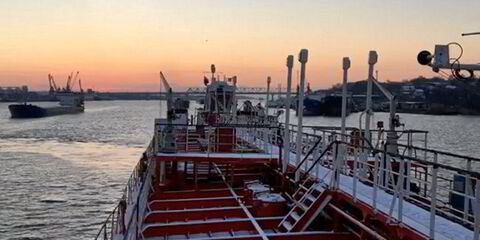Regulators want ships to run more quietly. Scientists have shown that man-made noise in the oceans is hugely detrimental to all kinds of sea life, from the largest whales down to the smallest crustaceans.
The sources of anthropogenic noise include those made by the global fleet of thousands of ships scattered over the oceans with their huge engines and propellers.
The International Maritime Organization has agreed to a three-year experience-building phase as it seeks to revise and strengthen existing guidelines, increase public awareness and enhance training on the issue.
A work plan agreed last week at the IMO contains a long-term plan to consider potential targets for underwater radiated noise and possible new regulations.
The issue has been a topic at the United Nations body since 2004 but has largely remained in the background as policymakers have focused on air emissions.
Underwater noise has been linked to whale and porpoise beachings, their ability to hunt for food, communicate and breed.
Guidelines were drawn up in 2014 and then updated last year, but lobby groups and some countries have been calling for stronger action to address barriers to the uptake of measures to reduce the impact of vessel noise.
This latest action plan, drawn up during the recent subcommittee on ship design and construction, will go to the next Marine Environment Protection Committee, MEPC 81, in mid-March.
Cause and reduction
Two of the main causes of underwater noise are a ship’s propeller, specifically with cavitation around propeller blade tips where air bubbles form, and noise from a ship’s main engines.
Supporters of the use of fuel cells and batteries point to the huge noise reduction benefit of these technologies, and others note how ship speed also impacts noise levels.
They add the use of wind assist technologies that reduce engine power, the cushioning of hulls with bubbles when using air lubrication to increase efficiency, and the use of energy-saving devices on propellers and rudders have all been linked to reductions of noise.
In short, there is a direct link between vessel efficiency and noise.
Upward trend
Research by the UK’s University of Southampton late last year, commissioned by the International Chamber of Shipping, examined the link between underwater noise from shipping and CO2 reduction.
In the report, the authors noted scientific concerns about ambient underwater radiated noise. It referenced research that established a significant link between economic growth, seaborne trade, and noise levels in the world’s oceans, with noise levels more than doubling in the past two decades.
The report authors believe that noise levels from the three main types of vessels — container ships, bulkers and tankers — will increase by 87% to 102% by 2030 compared with 2015.



